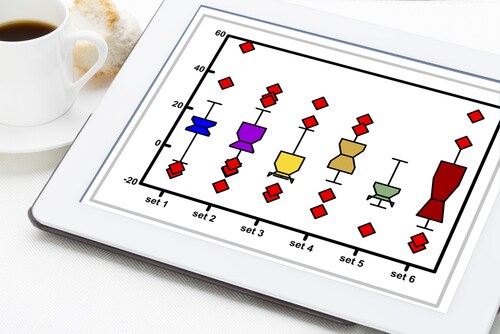 In a mathematically and statistically dense paper, Rudnick et al. (2014) present a thorough exploration of factors affecting normalization for quantitative proteomics analyses.1 After an extensive review of the causes of bias, the authors have created an algorithm for improved normalization of ion current-based, label-free proteomics data that is robust enough to deal with intra- and inter-laboratory variation. The authors also demonstrate its validity on experimental datasets obtained during normal working practice that utilized LTQ ion trap, LTQ Orbitrap hybrid ion trap-Orbitrap, LTQ FT and Q Exactive hybrid quadruple-Orbitrap mass spectrometers (Thermo Scientific).
In a mathematically and statistically dense paper, Rudnick et al. (2014) present a thorough exploration of factors affecting normalization for quantitative proteomics analyses.1 After an extensive review of the causes of bias, the authors have created an algorithm for improved normalization of ion current-based, label-free proteomics data that is robust enough to deal with intra- and inter-laboratory variation. The authors also demonstrate its validity on experimental datasets obtained during normal working practice that utilized LTQ ion trap, LTQ Orbitrap hybrid ion trap-Orbitrap, LTQ FT and Q Exactive hybrid quadruple-Orbitrap mass spectrometers (Thermo Scientific).
Rudnick et al. examine the potential for introducing bias into the label-free workflow that would account for the systematic issues arising that affect subsequent interpretation of results. From their analysis, they construct a stepwise statistical method for normalizing the resulting data that overcomes the introduction of bias and improves validity of results.
Quantitative proteomics analyses are common research tools these days, with scientists employing the sensitivity of mass spectrometry to advance protein chemistry way beyond traditional immunologic-based assays. Advances in technology mean that not only are low-abundance proteins and post-translational modifications detectable, but their levels of expression can also be determined. Quantitative methods use either labeled or label-free detection protocols. Where labels are used, two samples or more can be run using the same experimental procedure, although with certain restrictions in application, this method is limited. Label-free methodology is more widely applicable, even allowing post-collection, semi-quantitative re-analysis of data. Samples must be run independently, however, which introduces potential intra-assay variation and requires normalization of data before results are estimated.
Working with experimental datasets, which are described and summarized in detail for the reader, the authors use various computational software analyses in conjunction with statistical examination and mathematical equation modeling to create the normalization algorithms. First they examined the experimental workflow and resulting data sets to identify where biases are encountered during label-free quantitative proteomics. They found that within the same laboratory, bias is most commonly encountered in retention times and in the charge states; between laboratories, in addition to retention times, the precursor ion m/z ratio and the peptide length cause the most bias.
Rudnick et al. concentrated on peptide ion intensities as markers of overall reproducibility, comparing results from the same and separate sample runs. They found that within the same laboratory, variation was greater when samples were measured during different runs on the same mass spectrometer than when repeated within the same experimental time period, and that dispersion was greater at lower A values (denoting absolute abundance). They also found that results varied according to the sample loading dose, and that the systematic bias recorded also varied. Their conclusion was that peptides with higher charge states were more affected and that “precursor ion state is an important variability to be considered during data normalization.”
From these observations, the team constructed their normalization algorithm, taking retention time biases, precursor ion m/z ratios and peptide length into consideration in the formulation. Finally, the authors report success in applying their normalization protocol to the experimental data sets examined.
In conclusion, Rudnick and co-authors advise that systematic biases are always present in label-free quantitative proteomic analysis, and that these are usually not predictable. In addition, these biases are frequently local and non-linear. They suggest that interpretation of data arising from this methodology should only be undertaken with full understanding of the types and effect of systematic bias on normalized results. They feel appreciation of this factor in data analysis has great implications in biomarker discovery for the prevention of false-positive results.
Reference
1. Rudnick, P.A., et al. (2014) “Improved Normalization of Systematic Biases Affecting Ion Current Measurements in Label-free Proteomics Data,” Molecular and Cellular Proteomics, 13 (pp. 1341–51).
Post Author: Amanda Maxwell. Mixed media artist; blogger and social media communicator; clinical scientist and writer.
A digital space explorer, engaging readers by translating complex theories and subjects creatively into everyday language.
Leave a Reply